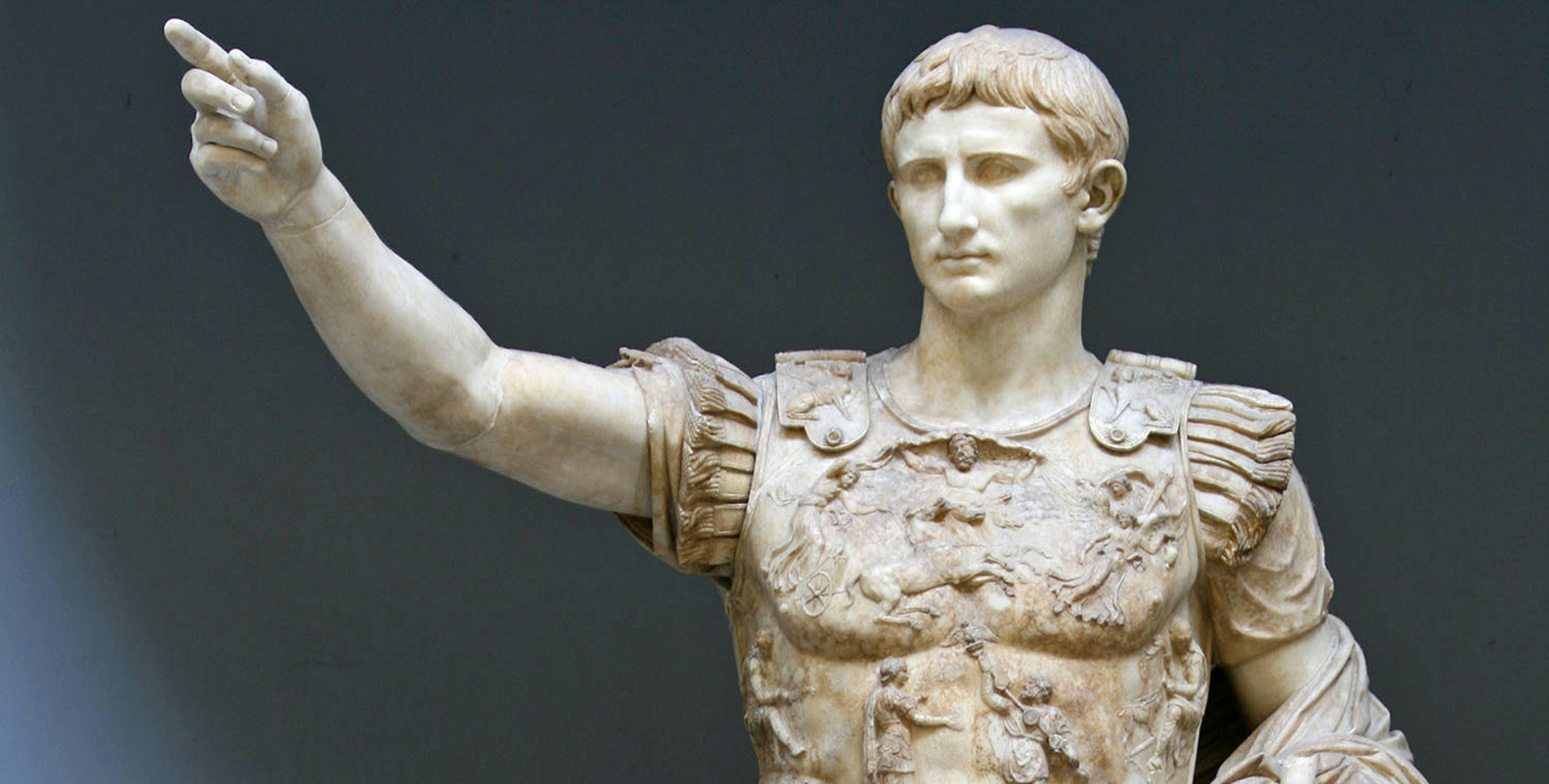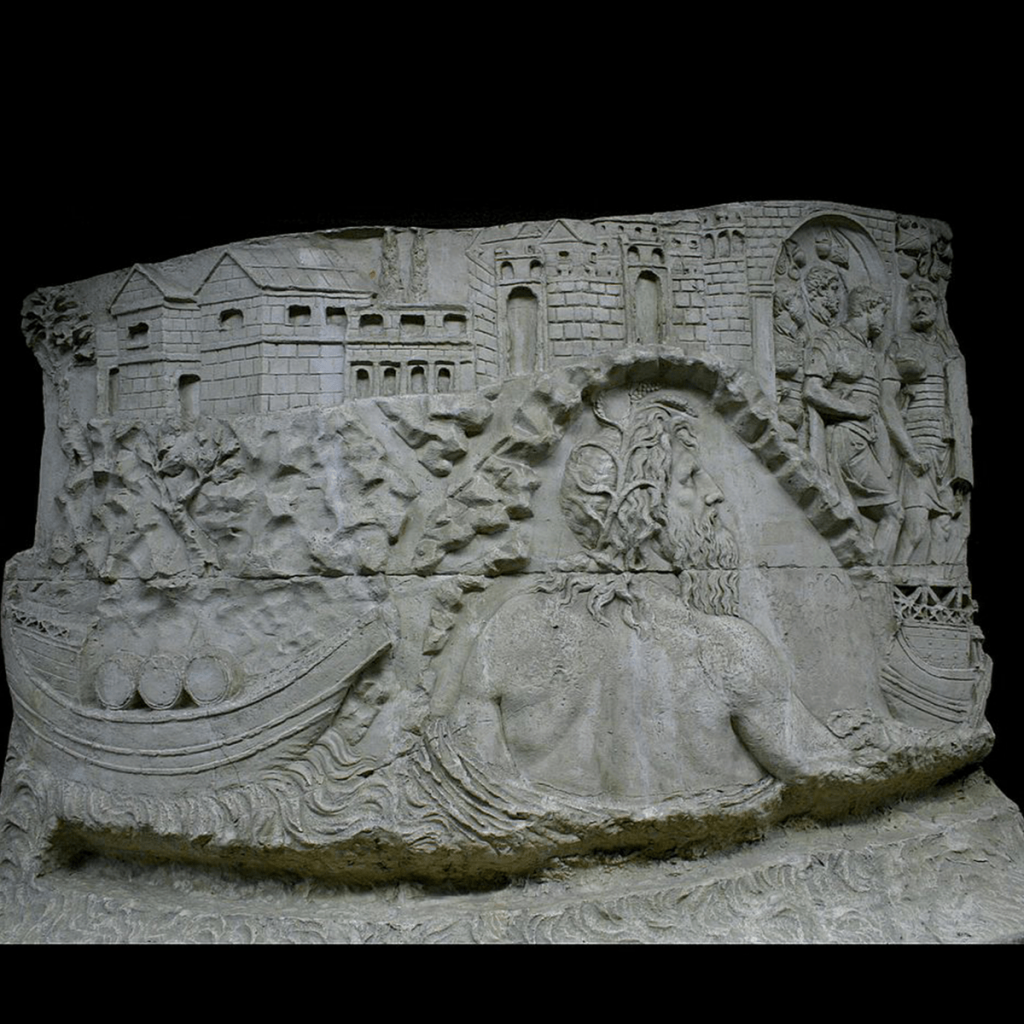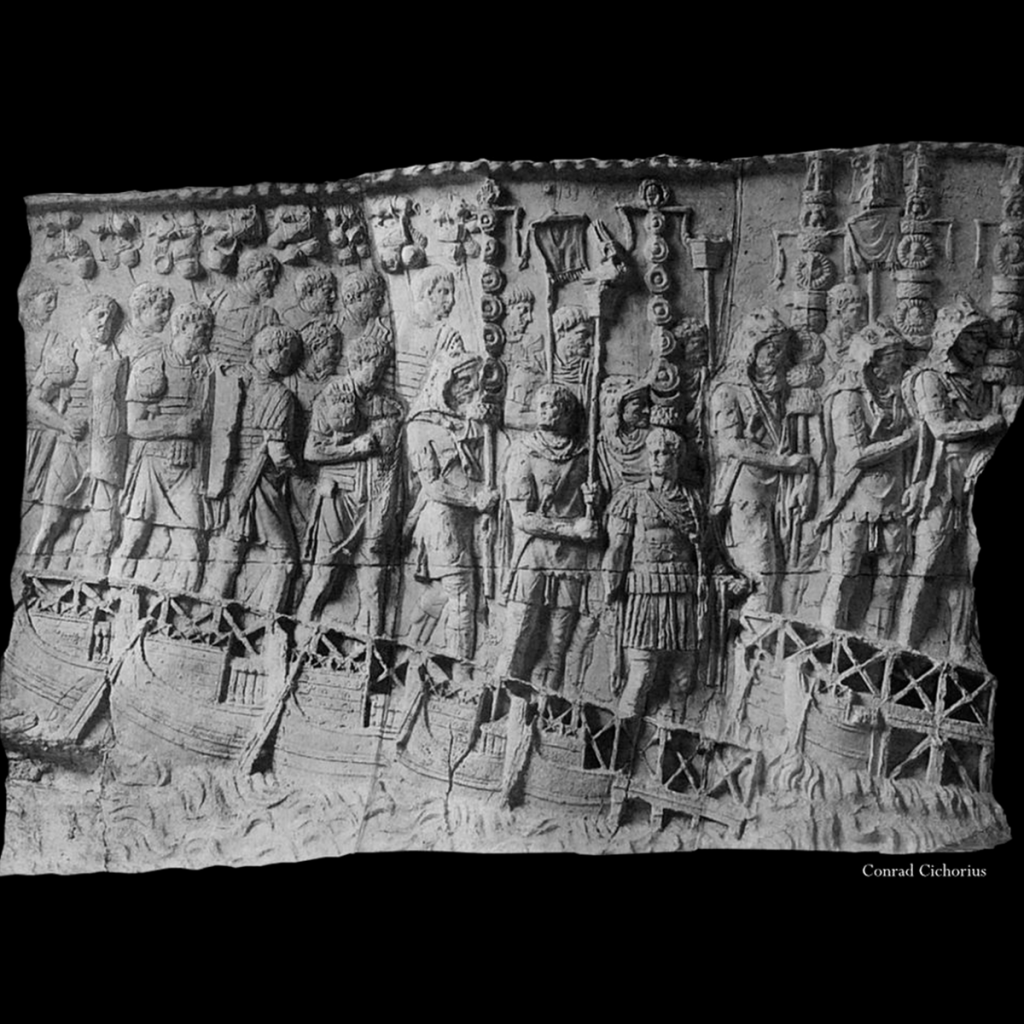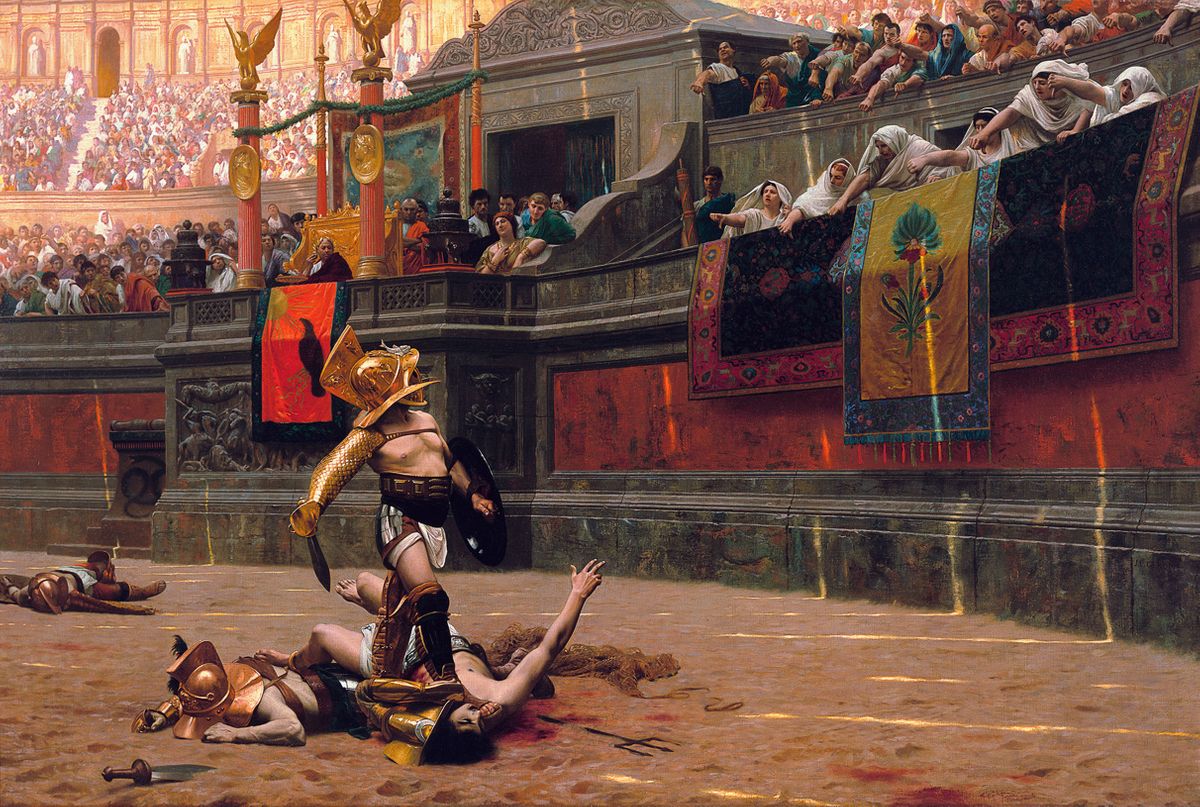


The Romans were not just content to copy the Greeks. They had their own myths, their own history, and they also invented new art forms.
Moreover, they got into the habit of narrating major historical events in sculpture form. This could be leaving for a war, religious festivals or the triumphs of emperors, which were represented as friezes and exhibited in the city.
These are what are known as “historical reliefs”. They served both to commemorate these events and to glorify those who participated.

Through the “historical reliefs”, the Romans narrated major events in the form of sculpted friezes.

Amongst the most famous reliefs, one of them is a vertiginous 40 metres high.
In this work, the sculpted frieze twists round a column built during the reign of Trajan, depicting war scenes and the Emperor’s victories. In all, it has 155 scenes and more than 2660 characters!
Who designed this? A certain Apollodorus of Damascus, a Syrian architect and engineer, and a specialist in the construction of bridges who also knew how to create oversize works.

The Danube watches the Roman army leaving the city

The Roman army marching

Speech

Trajan’s Column, said to be the work of Apollodorus of Damascus, is a historical relief work of outstanding dimensions.
The Romans also developed a material that would be hugely successful: concrete.

This plaster has several advantages:
Concrete, which was light and practical, made architectural innovations possible. The dome, for example, is a purely Roman invention.

When they developed concrete, which was inexpensive, solid and easy to use, the Romans innovated and created the dome.
Let’s leave architecture aside. One of the great Roman innovations was indeed the portrait sculpture. The Romans were just crazy about them.
Yes, this genre already existed in Greece, but in Rome the faces became realistic, with an individual identity.
Every emperor even had his own official portrait. A model was created in the capital, then sent out throughout the empire.
It was the task of local workshops to copy and disseminate it, so that the emperor’s portrait was everywhere in public areas – impossible to miss!

In Rome, the development of realistic portrait sculptures enabled the emperors to spread their image throughout the empire through copies.
Sometimes, however, some conquests were complicated. This was why two men fought each other in Gaul (today’s France and Belgium): Julius Caesar and Vercingetorix. The war between them ended at the battle of Alesia in 52 BC. Caesar won a crushing victory and Gaul fell into the hands of the Empire!

When Julius Caesar defeated Vercingetorix, leader of the Gauls, in 52 BC at the battle of Alesia, Gaul became part of the Roman Empire.
This was the size of the Empire at its height! At the time, although its artistic models were exported from Rome, there must have been local adaptations. This “mixed” art, which was a blend of different traditions, created totally original works.Are you ready for a Mediterranean trip ?

The different regions of the Empire adopted and adapted Roman art, creating new artistic forms.

Amongst the Roman traditions exported everywhere were circus games. Gladiators were the stars of these games! They also inspired numerous artists and film producers.
Was “thumbs down” the sign that the loser should be killed? In reality, this was a legend invented by these same artists and these professional fighters did not often die in the arena.
These fights were just one small part of the show. Clashes between wild animals, chariot races, dramatic performances and reconstructions of naval battles meant that there was something to suit (almost) everyone’s taste!

The circus games did not just feature gladiator fights, but also animals or chariot races and dramatic performances.

"*" indicates required fields